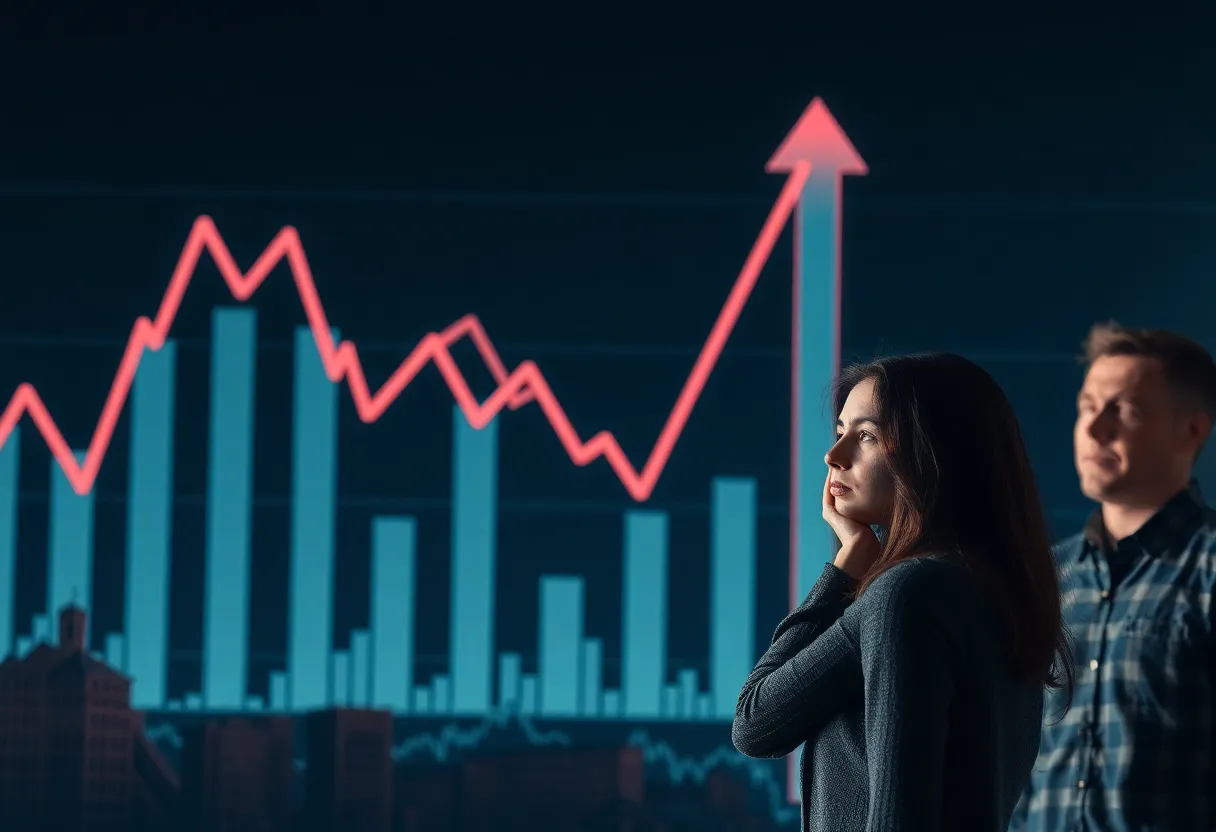News Summary
US consumer sentiment has dropped to its lowest level since the Great Recession, plummeting 32% since January. Factors such as rising inflation expectations, trade policy uncertainty, and fears of slow income growth are contributing to this significant decline in consumer confidence. With adjustments in financial forecasts for major industries like travel and housing, many are anticipating economic downturns. As investors seek safer options, the overall atmosphere reflects a cautious pause on spending and investment amidst looming economic concerns.
US Consumer Sentiment Hits Low Point as Economic Worries Grow
In a bitter pill for the economy, recent figures reveal that US consumer sentiment has fallen to its lowest level since the Great Recession. This setback isn’t just a minor blip; overall consumer confidence has plummeted by a staggering 32% since January, marking the most significant drop since the early 1990s economic downturn.
What’s Behind the Decline?
To put numbers to this concern, the consumer sentiment index fell from 57 in March to 52.2 in April, indicating rising unease among American consumers. This decline isn’t limited to a single group; it reflects worries across various demographics, including age, education, income, and even political affiliation. Basically, it seems like everyone is feeling the pinch.
The lingering uncertainty around trade policies and the constant fears of inflation creeping up have left many feeling apprehensive about the future. Notably, expectations regarding inflation jumped from 5% in March to a staggering 6.5% in April, making it the highest anticipated inflation rate since 1981. Coupled with this, the last time the sentiment index dipped below 55 was in the summer of 2022, coinciding with inflation hitting a peak at 9%.
The Tariff Tumble
In recent months, fears surrounding trade have notably impacted consumer perspectives. Analysts have pointed out that tariffs introduced during the Trump administration do not seem to be convincing consumers of any positive economic impacts. This has bred investor fears, leading to significant sell-offs in the stock and bond markets as folks scramble to mitigate their risks.
Interestingly, President Trump hinted that tariffs might “come down substantially,” but he also clarified they wouldn’t be completely removed. Thus far, despite some positive responses in the stock market to certain tariff pauses, consumer expectations regarding inflation continue to surge.
Income Growth Fears and Spending Woes
Adding to the economic woes, consumers are anticipating slower income growth in the upcoming year, which translates to decreased spending. This cautious outlook aligns with the recent downgrade in the US growth forecast by the International Monetary Fund (IMF), projecting growth at a lackluster 1.8% for 2025—a decrease of 0.9 percentage points from previous expectations.
With these fears hanging over them, consumers now face the possibility that tariffs could nudge inflation rates up to 4.7% by the end of 2025. As if that wasn’t enough, the overall sentiment saw a sharp drop to 50.8 in April, representing an 11% decrease from March and more than 30% since December.
Travel and Housing Concerns
These concerns extend to sectors like travel, with major airlines like American Airlines, Southwest, and Delta adjusting their financial forecasts for 2025. Weakened sales expectations attributed to domestic travel declines are leading these companies to pull their guidance, reflecting the larger economic uncertainty. Also, the perception of international travel is suffering due to lingering fears around trade policies.
On the housing front, the sales of previously occupied US homes has slowed in March as well, further contributing to the feeling that a recession may be on the horizon.
Looking for Safe Havens
Amidst this tumultuous backdrop, some investors may want to explore options like gold ETFs and commodity ETFs, which are considered safe-haven investments during times of market distress. Additionally, focusing on high dividend-paying stocks can also provide a steady income stream while navigating these rocky waters.
As consumers and investors alike grapple with these emerging trends, it seems the overall sentiment reflects a collective pause on spending and investment. With concerns looming large, it is a wait-and-see game for many as they navigate this complex economic landscape.
Deeper Dive: News & Info About This Topic
- The Guardian: Trump Tariffs Impact on Consumer Sentiment
- Reuters: US Consumer Confidence Deteriorates
- AP News: Consumer Confidence in Decline
- The New York Times: Inflation and Consumer Sentiment
- SI Live: US Airlines Revise Economic Outlooks
- Wikipedia: Consumer Sentiment








